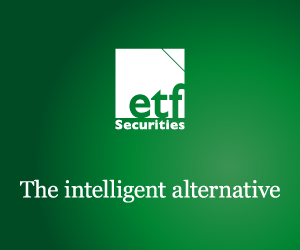US Debt Stand-Off Keeps Markets on Edge. The US fiscal and debt impasse continues to whipsaw markets, with gold falling below US$1,300oz last week on indications a short-term debt ceiling increase might find bipartisan agreement. However, with the estimated 17 October debt ceiling breach looming and no further progress over the weekend, markets are back in risk-off mode, with gold pushing higher again. Political misjudgement and resulting default (or even near default) would not just severely damage the US economy and the longer term faith in the US government’s commitment to repaying its debt, but would also have large negative reverberations across global financial markets and economies. Most investors appear to be betting that the consequences are so huge that even US politicians will eventually act rationally and find agreement. The risk, however, is that irreparable damage has already been done to investors’ long-term faith in the US’s commitment to honouring its debt obligations, further accelerating investors search for alternatives to the US dollar as a reserve asset. With Europe still facing serious structural issues and China not yet ready to step up to the plate, in our view, gold’s role as an alternative hard currency and reserve diversifier with continue to grow.
Physical gold ETPs saw US$79mn of outflows last week as a shortterm fix to the US debt stand-off seemed imminent. The gold price dropped below the US$1,300oz level last week after reports indicated an agreement between Obama and the House Republicans on a temporary increase in the debt ceiling was near. However, over the weekend little progress was made on finding temporary or permanent solution, and markets have again started to increase allocations to perceived safe haven assets such as gold.
ETFS Wheat (WEAT) records the biggest inflows in over five years, totalling US$19.7mn, on falling inventories. The wheat price has risen substantially over the past month, achieving over an 8% gain, as the UN Food and Agriculture Organisation (FAO) cut its estimate of the stock to disappearance ratio for the major wheat exporters. Given the low level of inventories relative to consumption and exports, any sudden change in weather could produce a sharp reaction in wheat prices. Lack of new data from the USDA following the federal shutdown is also likely to contribute to market uncertainty.
ETFS Physical Platinum (PHPT) receives US$12.7mn of inflows, the largest since May, as the Amplats strike continues into its 2nd week. The strike, that started on September 27, is costing the company about 3,100 ounces of output a day. Around 0.8% of supply has so far been taken off the market by the action. While the impact on total platinum production is so far negligible, investors have already positioned themselves for a potential worsening of the situation that could lead to a repetition of last year events. South African disruptions remain a potential short-term catalyst for platinum price rally.
Long silver ETPs record the fifth consecutive week of inflows, as the metal’s hybrid characteristics attract investors’ interest. Inflows amounted to US$2.7mn last week. While so far his year the silver price has been weighed down by the generally bearish sentiment towards gold, the recovery in China and the US could favour silver in the next months. With over 50% of its demand coming from the industry, silver is well positioned to benefit from a pick-up in the global manufacturing activity. At the same time its elevated correlation with gold provides investors with a hedge against a potential worst case scenario in the US.
Key events to watch this week. The main focus of markets this week will continue to be on progress on US debt/fiscal negotiations. Chinese GDP and industrial production will also be a key focus of markets. Cyclical commodities are likely to benefit from any better-than-expected data. Eurozone industrial production and car registrations will also be released with implication for cyclicals and platinum in particular.
Important Information
General
This communication has been provided by ETF Securities (UK) Limited (”ETFS UK”) which is authorised and regulated by the United Kingdom Financial Conduct Authority.

 Nyheter4 veckor sedan
Nyheter4 veckor sedan
 Nyheter3 veckor sedan
Nyheter3 veckor sedan
 Nyheter4 veckor sedan
Nyheter4 veckor sedan
 Nyheter3 veckor sedan
Nyheter3 veckor sedan
 Nyheter3 veckor sedan
Nyheter3 veckor sedan
 Nyheter2 veckor sedan
Nyheter2 veckor sedan
 Nyheter3 veckor sedan
Nyheter3 veckor sedan
 Nyheter2 veckor sedan
Nyheter2 veckor sedan






















